Posts Tagged: A. I. Root
Nematode Booth Wows Crowd at UC Davis Biodiversity Museum Day
Nematodes! The display of nematodes (aka "roundworms") at the 11th annual UC Davis Biodiversity Museum Day, held Sunday, March 6 in the UC Davis Conference Center, drew scores of curious visitors. Many were dog owners...
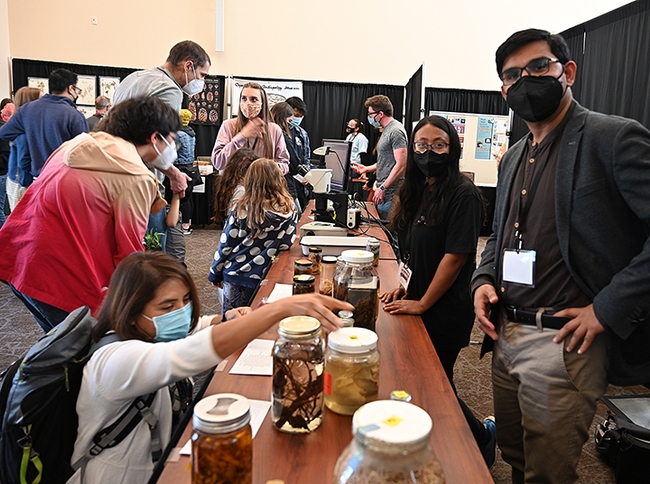
Three nematologists kept busy at their booth at the UC Davis Biodiversity Museum Day. In front is coordinator Shahid Siddique, assistant professor, and his doctoral students Pallavi Shakya (nearest him) and Alison Coomer. In the back (far right) is Rob Blundell, not part of the lab, but who assisted. (Photo by Kathy Keatley Garvey)
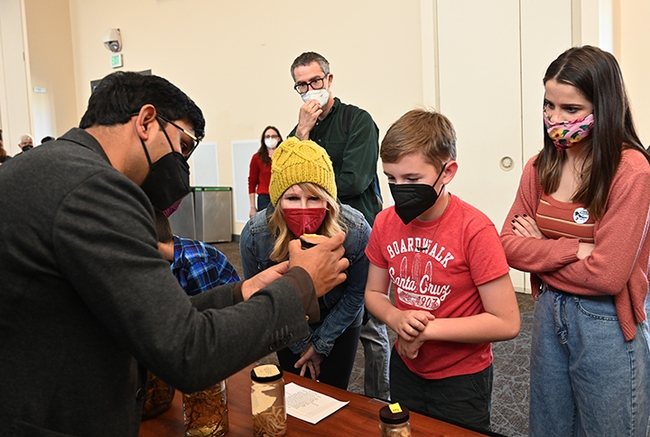
Nematologist Shahid Siddique, assistant professor, UC Davis Department of Entomology and Nematology, shows nematodes to curious visitors. (Photo by Kathy Keatley Garvey)
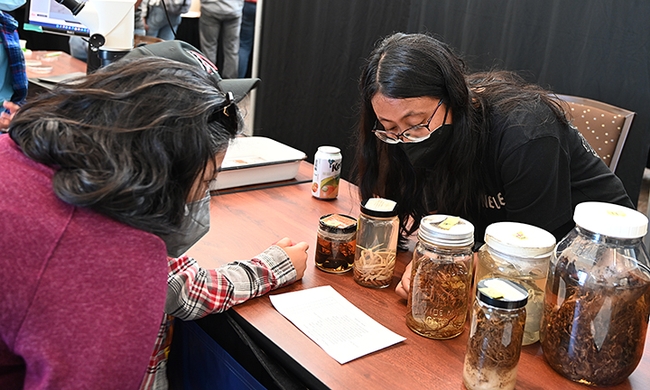
UC Davis doctoral student and nematologist Pallavi Shakya answers questions about nematodes. (Photo by Kathy Keatley Garvey)
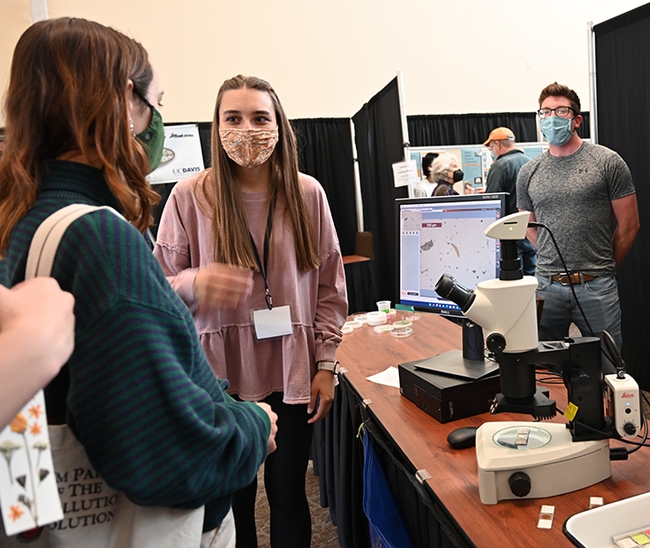
Doctoral student and nematologist Alison Coomer fields questions from the crowd. At far right is scientist Rob Blundell, who assisted. (Photo by Kathy Keatley Garvey)
Of French Fries, Couch Potatoes and Root-Knot Nematodes
When you think of potatoes, your thoughts probably turn to baked potatoes, French fries, the "one-potato-two-potato" game, or "couch potatoes" (especially during the sheltering-in mandates). You're not thinking of root-knot nematodes, major...
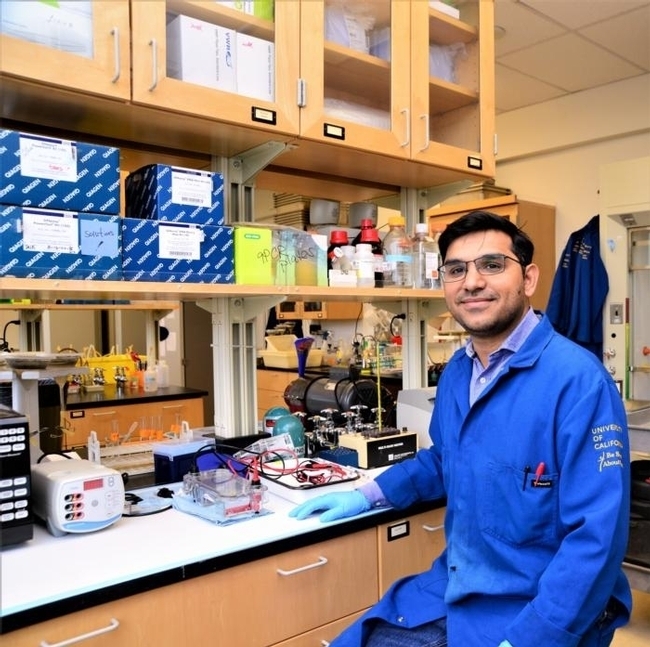
UC Davis nematologist Shahid Siddique. (Photo by Kathy Keatley Garvey)
To Kill a Honey Bee
How times change with the advancement of knowledge. It's long been known that when honey bees—as well as other insects—get trapped in the milkweed's pollinia, or sticky mass of pollen, many perish when they are unable to free themselves. So...
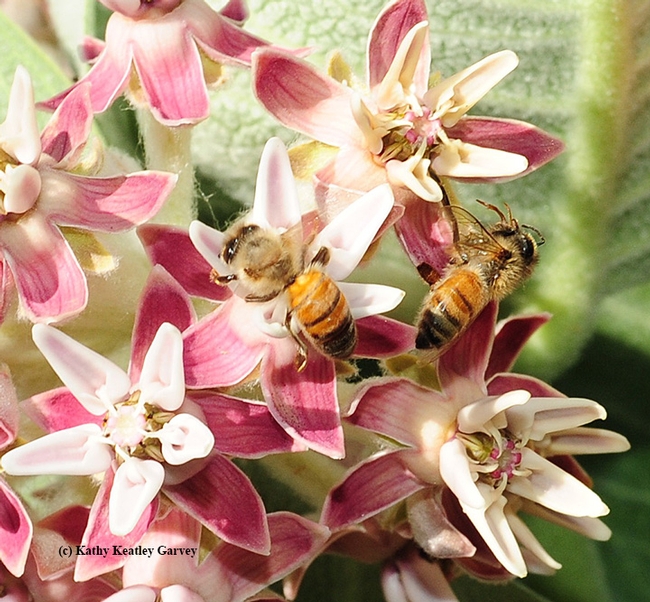
Honey bee (at right) perished when her foot got caught in the pollinia and she was unable to free herself. At left is a foraging bee. (Photo by Kathy Keatley Garvey)
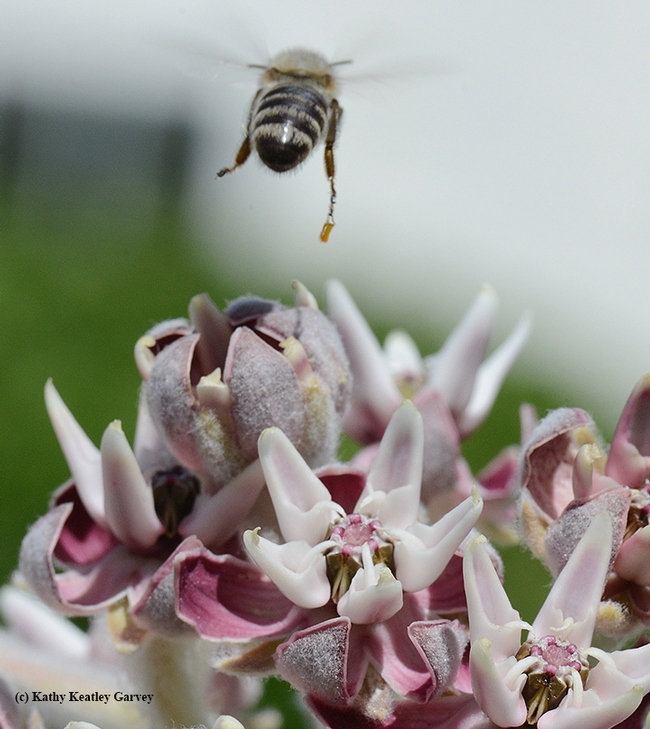
A honey bee flies off with pollinia on her leg. She returned to gather more nectar from the milkweed. (Photo by Kathy Keatley Garvey)
Bee-utiful Find
It was a bee-utiful find: A how-to book published in 1890 on rearing honey bees. We found the book, ABC of Bee Culture: A Cyclopedia of Everything Pertaining to the Care of the Honey Bee; Bees, Honey, Hives, Implements, Honey-Plants, Etc. by A. I. Root,...

Inside the Hive
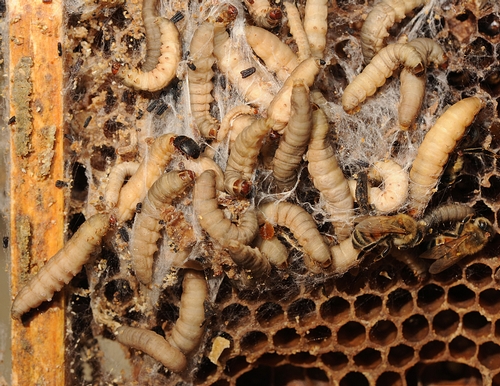
Wax Moth Larvae

